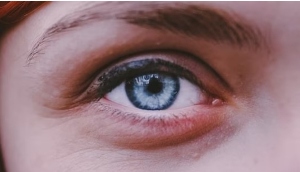Asthenopia Or Eye Strain: Causes, symptoms, Treatment
What is Eye Strain/ Asthenopia?
Eye strain/ Asthenopia is a common condition caused from intense use of your eyes, such as reading or driving long distances. In recent years, the main common cause is extended use of computers or other digital devices, such as cell phones or iPads. This type of eye strain is called digital asthenopia.
Asthenopia can cause discomfort, but is usually not a serious condition. Many steps can be taken to reduce or prevent eye strain/Asthenopia .
What causes eye strain/ Asthenopia?
Eye strain/Asthenopia is caused by intensely focusing your eyes during a task. Causes can include:
- Driving
- Reading
- Computer and cell phone use
- Extended periods of detail work (sewing, writing)
Eye strain/ Asthenopia is basically tired eyes. It is sometimes also called eye fatigue. Doing these chores or tasks in dim light can intensify eye strain.
People with prior eye conditions, such as uncorrected vision or muscle imbalance, are at greater risk of eye strain/ asthenopia. Stress and fatigue can also contribute to eye strain/ asthenopia.
Digital eye strain/asthenopia has several distinct causes. Researchers have found that when people use computers or other digital screens, they blink less. This leads to dry eyes, which can contribute to eye strain/ asthenopia. Digital devices can also cause eye strain/asthenopia because of their glare, or when there is poor contrast between the type and the background. Improper distance from the screen and poor lighting can also lead to eye strain/ asthenopia.
What are the symptoms of eye strain/ Asthenopia?
The common symptoms of eye strain include:
- Watery eyes
- Dry eyes
- Blurred vision
- Sensitivity to light
- Headache
- Neck and shoulder pain
- Difficulty concentrating
- Burning eyes
- Itchy eyes
- Hard time keeping your eyes open
How is eye strain/ Asthenopia diagnosed?
Eye strain/Asthenopia is diagnosed during a visit to your eye care provider’s office. During this visit your healthcare provider will discuss the following topics:
- What symptoms you are experiencing
- When these symptoms occur and what tasks you might be doing when they happen
The physician may also do a physical exam to look for muscle imbalance, uncorrected refractive errors (nearsightedness or farsightedness) and other issues with the eye itself.
Most times, eye strain will disappear on its own. In those cases you do not need to see your physician. Eye strain/Asthenopia is usually treatable with some simple lifestyle changes and awareness of the tasks that irritate the eyes. However, if your eye strain is severe or long-term, you should seek medical attention to rule out any more serious conditions.
How is eye strain/ Asthenopia Treatment?
Eye strain/ Asthenopia is usually treated with lifestyle changes. These may include wearing glasses for certain activities, such as reading. Taking breaks from reading, writing and driving can also help reduce eye strain/asthenopia.
Other tips to reduce eye strain/asthenopia include:
- Use lubricating eye drops.
- Adjust your lighting based on your activity.
- Use a humidifier.
- Quit smoking.
Tips to reduce digital eye strain include following the 20-20-20 rule. This rule says to take a 20-second break to view something 20 feet away from you every 20 minutes.
Other tips include:
- Choose screens that tilt and swivel
- Regularly clean your screen as smudges can reduce contrast
- Use a glare filer
- Reduce glare on your screen through proper lighting
- Use an adjustable chair
Can eye strain/ asthenopia be prevented?
Eye strain can be prevented by identifying the cause of the issue and finding ways to correct it. Taking breaks, increasing the amount of blinking you do and other tips can help protect your eyes from strain. Some more tips and work habits to help prevent eye strain include:
- Using artificial tears when your eyes begin to feel dry
- Applying a warm, wet washcloth to tired eyes
- Using a humidifier even when your eyes do not feel dry
What are the risk factors for someone with eye strain/ asthenopia?
Risk factors for eye strain/asthenopia can include:
- Working in front of a computer or screen for long periods of time
- Doing tasks that require the eyes to focus for extended periods of time
- Having dry eyes
- Having muscle problems within the eye
Eye strain/ Asthenopia can be irritating, but is rarely more than a nuisance. With proper eye care and work habits, you should be able to successfully and quickly reduce eye strain.
